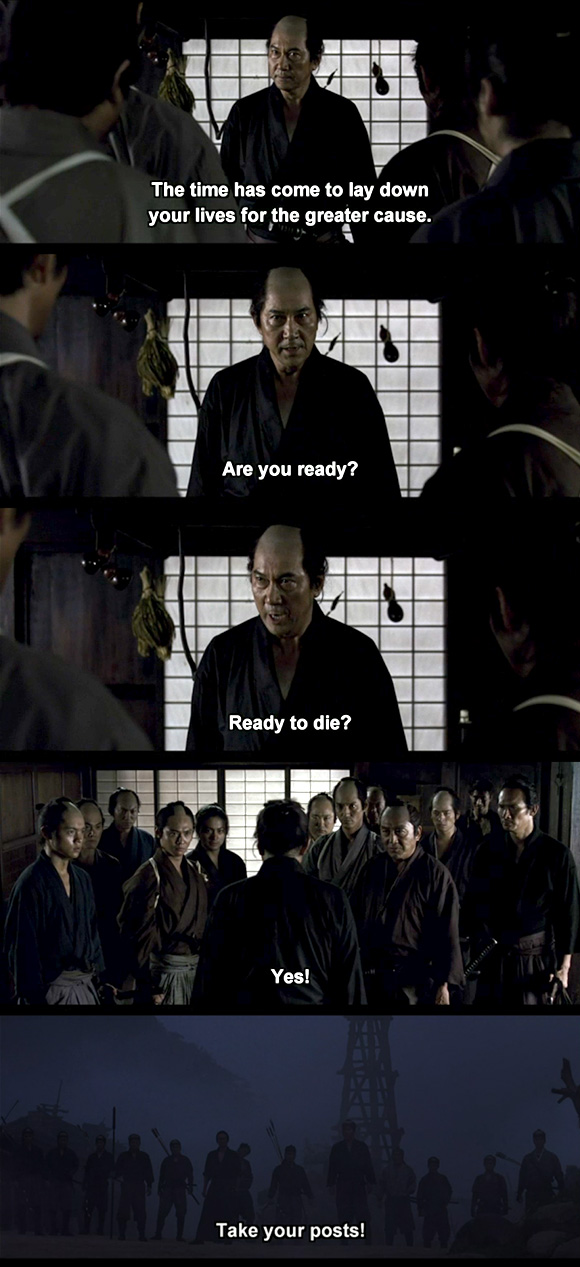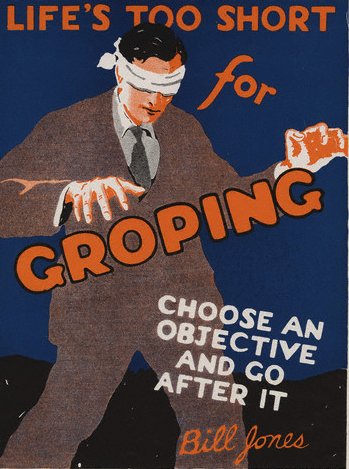How to Mindfulness Meditation
Here’s my guide to getting started with the mindfullness meditation stuff. These aren’t precepts handed down on stone tablets; just some roadblocks I’ve had to navigate.
1. Don’t tell anyone about it
You’re really going to like this meditation stuff. But if you start telling people about what meditation is and how they should do it you’ll sound like a nincompoop. You might as well start wearing one of those silly Indian collar linen shirts and replacing “hello” with “I see the god in you.”
This stuff is good, and you’re going to see how powerful it is, but it’s hard to share because you’ll come off like a new-agey weirdo. So, take your time with the “have you entered down the path to true happiness??” instant messages and conversations. Trust me.
2. Mind your environment
Where you do the sitting is kind of important. It’s not going to make it, and you don’t have to let it break it, but it can muck with your gig to try to sit in a loud, uncomfortable, “people walking in and out” kind of place.
I’ve done it in unused cubicles, dark offices, bright offices. You can do it just about anywhere. You just don’t want to be interrupted when you’re doing it — it’s embarrassing, uncomfortable conversations follow, and it gets in the way of your whole “flying a carpet with Deepak” flow.
It can be hard to find a good place. Make do with what you can. If you don’t have the perfect place, don’t let that keep you from doing it real good.
3. Positive posture
You know that whole yoga thing all the girls in the pants are doing? It originally came from meditation practices. The mindfulness folks of yesteryear noticed a connection between body posture and the kind of mind you have. It’s true. So, notice and be intentional about your posture when you sit.
It’s common to sit on a pillow with legs folded indian-style. Back straight, not leaning forward or backward. Head dignified (whatever that means to you). I’ve heard the guru guys talk about an “alert” spine. I like the use of words like “alert” and “dignified” to describe posture because you’ll come up with things to do with your hands and ways to be in your sitting that are different than other folks. That’s good.
I can’t do the indian style thing; my hip somethings are way too tight (and manly). So I made a little bench (with my hands, out of wood, so manly) I can use to sit on my knees like a badass samurai when he’s just hangin’ out (can’t over-emphasize how cool and masculine I look when I meditate, you guys).
In your posture there’s a little bit of discipline — a little bit of holding together and a little bit of letting go/relaxing. I think this is an important part of the mindfulness. Probably.
Note: You could totally walk as a form of meditation. When you do so, try to focus on your breath, or your steps, or something in your body. Because the point of the whole thing is not the sitting, it’s the awareness. More on that below.
4. Time thoughts
Start with little 5-20 minute sessions. Real magic can start to happen in the longer sittings (45+ min), but it takes some digging to get used to it for that long. Seriously. You never knew you had so much to do or so much anxiety until you try to sit down and meditate for 45 minutes before you’re ready for it.
 I use an iPhone app called Equanimity (Enso may actually be a better option now). It’s pretty and you can set these little bells to chime at intervals. For example, right now my typical session is 25m with a chime every 5 minutes. I highly recommend this app.
I use an iPhone app called Equanimity (Enso may actually be a better option now). It’s pretty and you can set these little bells to chime at intervals. For example, right now my typical session is 25m with a chime every 5 minutes. I highly recommend this app.
Hell, you could start with 20 seconds a few times a day. When you wake up take 3 deep breaths before you get out of bed. Every red light, 3 deep breaths. Before every meal, 3. This is a good way to take a second, notice where you are, notice what’s in your body, be aware, grateful, etc. Again, it’s about the awareness, not the practice itself. The discipline serves the awareness, not the other way around. {chops an hundred wood boards in half}.
5. Come back to your breath
Ok, so the mindfullness thing is really about one thing: being aware. Being aware of right now. Not being caught up in some fantasy about the future or past. This is the goal. It sounds simple, but it’s effective.
A good way to get this awareness is to focus on something. The thing your focusing on acts like an anchor, it shows you when your mind wanders off. You could focus on a rock or a picture or something, but we have a built in thing to focus on that’s better than that: our breath.
Focusing on your breath means paying attention to how it feels. Where do you most feel your breath? For me it’s at the back of my sinus; cold air, movement. That’s where I start. You might be in your belly or just below your nostrils or somewhere else. That’s your first step: notice where you feel your breath.
Once you find where you feel your breath, hang out there for a bit. Try not to let your mind wander from that. Notice what it feels like. In and out. In and out.
Your mind will wander, start dreaming something up, shuffling through to-do items, etc. Notice it, call a thought a thought, don’t judge, don’t be harsh to yourself, acknowledge it and come back to your breath.
When you focus on the breath it becomes easy to see when you’re not focused on the breath. You see the mind at work. You start to become aware of thinking rather than caught up in it. You can become more of the captain, aware of what currents and tides and winds are at work, rather than the ship being tossed around on the sea.
Each session is a workout; you’re training your mind little by little. You get the immediate benefit of relaxation (this stuff is very relaxing), but the big benefit is it’s shaping how you think and how you live, making you less likely to miss that cue from your wife or that moment with your son or that weakness in your latest business idea, or prone to anxiety about x or y. Little by little, sitting by sitting your mind is getting better, more in tune with your body and your you and reality and now I sound like I’m wearing Deepak’s scarf again.
6. Get some guides
I have been literally making all this up as I go. But I’ve had some help from some guides. I’m only going to share one so you can get straight into it without any lollygagging.
- Gil Fronsdal: guided meditation (30m)
You can download that and keep it as an audiobook on your iPhone. I listened to this every once in a while for the first year. You can listen to it every time you sit or switch off and be your own boss for a session or two. It’s up to you.
This guided thing is really helpful. And Gil’s adorable. It’s nice to have him reminding you to come back to your breath. When your self talk sounds a bit less like the screaming sergeant from Full Metal Jacket and a little more like Gil you know you’re on to something.
Closing thoughts
It’s not as easy as getting into Breaking Bad but it’s worth it. Caveman didn’t need to do the sitting thing to be aware of what the hell was going on. Fuck it, fight it, run from it, feed on it. Modern man is losing the war to lite beer because we’re so far out of touch. I’m glad I got a copy of Deepak’s scarf to throw on every now and again. Makes me feel fabulous.
- Find a good place for a short amount of time (5-15 min).
- Pick a good posture (sitting, knees, lying down, or walking).
- Focus on your breath (listen to that guided meditation).
- Don’t tell your friends or they’ll lose respect for you.


